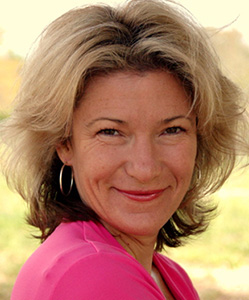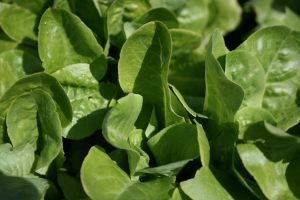
It was volunteering in her children’s Montessori school garden that gave rise to her new series Wild Tales & Garden Thrills, stories bursting with the real-life experiences of young gardeners. Children see the world from a totally different perspective than adults and Venetta knows their adventures will surely inspire a new generation to get outside,
and get digging.
More specifically, a temperature. I live in Florida, so gardening is a year-round adventure for me. However, not all climates lend themselves to being outdoors like the Sunshine State. And the great outdoors is where gardens thrive. Sure, we can use greenhouses to “trick” Mother Nature and grow just about anything, anytime. But most gardeners don’t have a greenhouse and must contend with nature. Which really isn’t that difficult. As I like to say, “Plants grow all by themselves in nature. We’re just there to enjoy it!”
But plant growth is a science. Seeds wait to germinate until three needs are met: water, correct temperature (warmth), and location (soil). Seeds are their own energy source — a plant in embryo form, storing energy that is released and used only when water, oxygen, soil, and a near-ideal temperature become part of their environment. During its early stages of growth, a seedling relies upon the food stored within the seed. When it’s large enough for its own leaves, it can begin making food through photosynthesis.
Water is pretty standard fare when it comes to a plant’s growth needs. They either have enough, or they don’t. Temperature and location are different stories. When it comes to temperature, some seeds like it warm before they’ll be encouraged to “wake up” and begin their ascent through the soil. Others, not so much. Give them too much warmth, and they’ll sit tight, waiting for better conditions. This is called dormancy, and seeds will remain dormant until conditions for germination are met, or they aren’t, in which case the seed eventually dies.
Who likes it warm? Tomatoes, peppers, melon, cucumber, and squash are a few that like it warm. Generally, they prefer temperatures in the range of 65-85°F before they become active. Cabbage, broccoli, spinach, carrots, peas, lettuce, and parsnip, prefer cooler weather, around 45-75°F before they come alive. Ten degrees doesn’t seem like much, but it can make all the difference in the world.
As can soil. Most plants prefer loose, well-drained soil. If it’s too compacted, like clay, they’re unable to spread their roots to maximum length. On the opposite end of the spectrum, sand is too loose providing little support for the plant and even less nutrient content. Ideal soil can be achieved through a mix of compost, peat moss and vermiculite. The blend will hold moisture well, allow the roots to stretch while serving up the basics in nutrition.
 Not to be forgotten are the ever-popular bulbs. These work a bit differently than seeds in what I like to think of as a “hibernation” process. The tulip, daffodil, lily, sweet onion, and garlic begin as bulbs, planted in fall while the ground is still cool, but not frozen. Similar to seeds, bulbs won’t provide any action until spring, but then, watch out! When temperatures begin to warm, the bulbs come to life and head for sunlight, revealing their beauty and glory.
Not to be forgotten are the ever-popular bulbs. These work a bit differently than seeds in what I like to think of as a “hibernation” process. The tulip, daffodil, lily, sweet onion, and garlic begin as bulbs, planted in fall while the ground is still cool, but not frozen. Similar to seeds, bulbs won’t provide any action until spring, but then, watch out! When temperatures begin to warm, the bulbs come to life and head for sunlight, revealing their beauty and glory.
And for those who simply can’t wait for spring, consider planting a variety of herbs and lettuce in containers, placing them throughout your home. Not only do these plants do extremely well indoors, they’re aromatic, attractive, and will provide enjoyment all winter long.
While you’re in the gardening mode, why not incorporate some edibles into your landscaping? Think rosemary, blueberries, and fruit trees. Widely available at garden centers, these plants will produce year after year providing a continual, fresh harvest. Ever heard of an agrihood? It’s a planned community centered around a working farm. They’re all the rage, these days and you can join the movement by creating your own mini-farm. Can you say, trendsetter?

